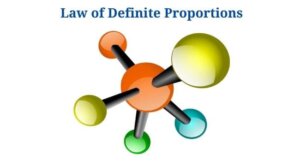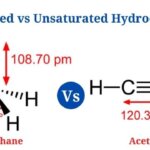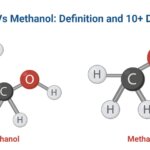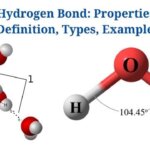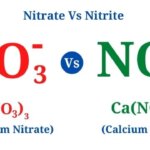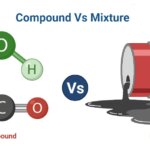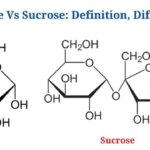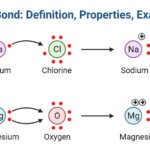Who exactly is Joseph Proust?
- Joseph Louis Proust (September 26, 1754 – July 5, 1826) was a French chemist best known for discovering the law of definite proportions, also known as the law of constant composition.
- Joseph Proust was a chemistry instructor who worked at a number of different institutions, including the Royal Artillery School in Segovia as well as Musee, a private school.
- In 1794, while working on copper carbonate, two tin oxides, as well as iron sulphides, Proust invented the law of definite proportions (also known as Proust law).
Law of Definite Proportions Definition
According to the law of definite proportions, a chemically pure substance always contains the same set of elements mixed in a specified weight proportion.
- In other words, the percentage composition of an element in a compound is always fixed, according to the law.
- The law of definite proportions is important in analytical chemistry as well as is the foundation for a number of other chemical breakthroughs.
- According to the law, a chemically pure material has the same chemical makeup regardless of the source, as well as the elements in the compound exist in the same mass ratio.
- The law of definite proportions has been linked to Dalton’s atomic theory, which was later confirmed by Swedish chemist Jacob Berzelius in 1811.
- The law is also consistent with Lavoisier as well as Lomonosov’s law of mass conservation.
Law of definite proportions formula
The following formula is used to determine the proportion of different elements in a compound:
The proportions/percentage ratios of the constituents in a compound AB made up of two elements, A as well as B, can be stated as:
Law of definite proportions equation
The following mathematical expression can be used to explain the law of definite proportions:
If a compound AB with the following composition is produced from three distinct sources:
x1 gram of A and y1 gram of B
x2 gram of A and y2 gram of B
x3 gram of A and y3 gram of B
Now, by the law of definite proportions;
x1/y1 = x2/y2 = x3/y3
This means that the percentage composition of elements A as well as B in compounds derived from three independent sources is constant.
Law of definite proportions examples
- Glucose’s Hydrogen, Oxygen, as well as Carbon
- Glucose is a molecule with the molecular formula C6H12O6, showing whichit is made up of varying quantities of carbon, hydrogen, as well as oxygen.
- Six atoms of carbon, 12 atoms of hydrogen, as well as six atoms of oxygen are necessary for a substance to be glucose or for a molecule of glucose to form.
- In terms of percentages, carbon accounts for around 40% of glucose, hydrogen for 7%, as well as oxygen for 53% of a glucose molecule.
- If any of the above proportions are altered, a glucose molecule cannot be created. Similarly, glucose derived from natural or synthetic sources contains the same elements in the same amounts since the combination follows the law of definite proportions.
- Water containing hydrogen as well as oxygen
- Water is made up of two hydrogen atoms bound together by covalent or hydrogen bonds with a single oxygen atom.
- One mole of water has a molecular weight of 18 grammes as well as comprises 2 grammes of hydrogen as well as 16 grammes of oxygen.
- Hydrogen makes up 11% of water, while oxygen makes up 89 percent of a water molecule in terms of percentage by weight.
- Even if the weight or moles of water are increased, the element ratio in water remains constant.
- Water, in any state of matter, includes the elements in the same proportions since the law of definite proportions applies to it.
Exceptions to the Law of Definite Proportions
Despite the fact that the law of definite proportions is a cornerstone of modern analytical chemistry, it does not apply to all chemical substances. The following are some of the exceptions to this rule:
- The law of definite proportions applies to all gaseous molecules as well as smaller molecular compounds in other states of matter, but it does not apply to polymers. Even polymers with identical monomers exhibit significant differences in polymer molecule length, branching, termination, as well as so on.
- Non-stoichiometric compounds with varied element proportions derived from various sources do not follow the rule. Since the transition as well as inner transition elements have various oxidation states as well as numerous oxidation states of the elements can occur simultaneously in a solid phase, nonstoichiometry is widespread in their compounds.
- In different samples of a compound, the isotopic composition of the constituent elements fluctuates, causing a divergence from the law. This is due to variations in the elemental mass ratios.
Law of Definite Proportions Citations
- https://www.britannica.com/science/water
- https://www.answers.com/Q/What_is_the_ratio_of_carbon_to_hydrogen_to_oxygen_in_glucose
- https://quizlet.com/94372268/chem-chapter-3-flash-cards/
- https://quizlet.com/13516986/ap-chemistry-chapter-2-vocabulary-flash-cards/
- https://hktukaram.blogspot.com/2019/12/
- https://en.wikipedia.org/wiki/Law_of_definite_proportions
- https://ciaaw.org/pubs/TICE-1997.pdf
- https://chem.libretexts.org/Bookshelves/General_Chemistry/Book%3A_Chemistry_(OpenSTAX)/19%3A_Transition_Metals_and_Coordination_Chemistry/19.1%3A_Properties_of_Transition_Metals_and_Their_Compounds
- https://byjus.com/chemistry/law-constant-proportion/
- https://brainly.com/question/1507292
- https://ankplanet.weebly.com/law-of-constant-composition.html
- https://link.springer.com/chapter/10.1007%2F978-94-017-2292-6_6
Related Posts
- Dissecting Microscope (Stereo Microscope) Definition, Principle, Uses, Parts
- Saturated vs Unsaturated Hydrocarbons: Definition, Differences, Examples
- Ethanol Vs Methanol: Definition and 10+ Differences
- Hydrogen Bond: Properties, Definition, Types, Examples
- Nitrate Vs Nitrite: Definition, Differences, Examples
- Aromatic Compounds vs Aliphatic Compounds: Definition, Differences, Examples
- Compound Vs Mixture: Definition, Differences, Examples
- Elements Vs Compounds: Definition, Differences, Examples
- Molecules Vs Compounds: Definition, Differences, Examples
- Hard water Vs Soft water: Definition, Differences, Examples
- Glucose Vs Sucrose: Definition and Key Differences
- 13+ Difference Between Atom and Molecule with Examples
- How to Balance Chemical Equation: Methods, Steps, Examples
- Ionic Bond: Definition, Properties, Examples
- Amylase Vs Amylose: Definition, Differences, Example

